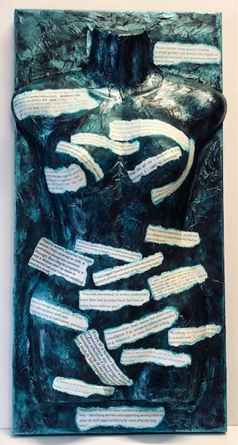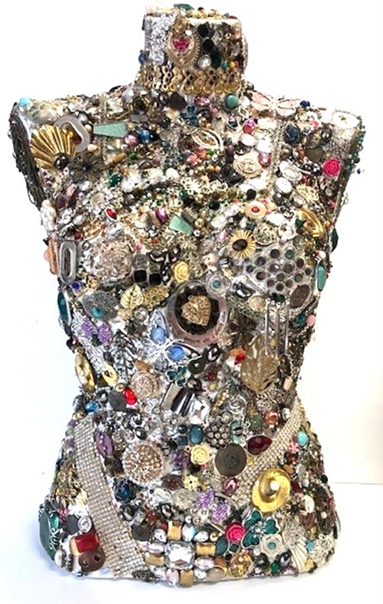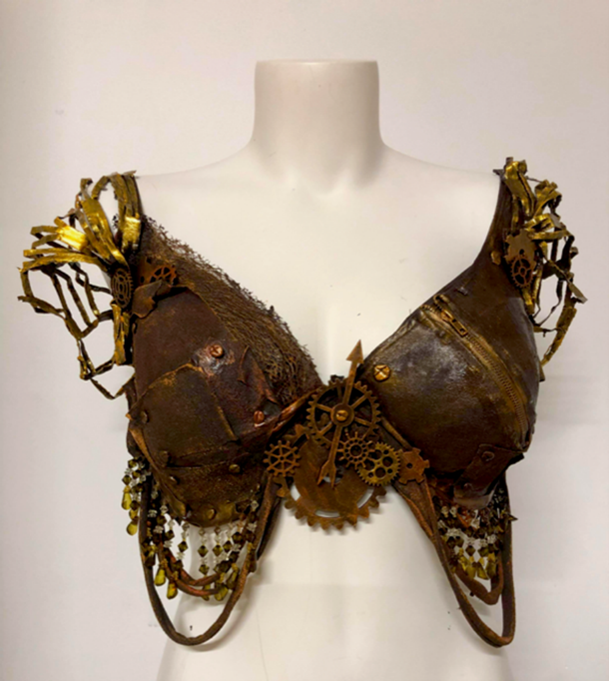By Lisa Hobbs
Registered paramedic, Senior Lecturer, School of Nursing, Midwifery and Paramedicine at Australian Catholic University, Adjunct Senior Lecturer (Paramedicine) at University of Southern Queensland
"CABR is participatory in nature, whereby the research participants assist in the creation and the generation of data"
Beginning to dip your toes into the realm of paramedic research can be incredibly daunting. Although you may feel like an accomplished clinician, preceptor or academic, taking that next step into research can feel like jumping into an abyss.
Despite a 30-year history, existing research within paramedicine has been described as “under-utilised” and “undeveloped”, most likely due to challenges the discipline has faced progressing and expanding upon research opportunities, accessing funding and support for paramedics.(1) Paramedic research is now growing at an exponential rate as the profession matures. Most paramedic research has focused on clinical care interventions pertaining to technical skills, interventions and pharmacology.(2,3,4) This makes sense as this is our comfort zone so to speak, since it is akin to our clinical or academic identities. However, a theme is becoming apparent that topics being investigated through PhD research appear to focus on paramedic education and continuing professional development more than clinical interventions, possibly indicating academics are highly represented amongst paramedics with doctorates.(5)
Although qualitative research and mixed methods approaches are becoming more accepted by the profession, influences from the historical technical nature of paramedicine explains why most paramedic research utilises quantitative methods or positivist approaches.(2) As the discipline evolves, there are possibly vast avenues of approaches to research that paramedic researchers have yet to traverse.
When starting out on the research journey, it’s easy to feel overwhelmed by many things, like “What is my actual research question?”, “Which philosophy, theory or methodology should be used” and “Will I be able to publish this?”. It is recommended that paramedic researchers incorporate conceptual frameworks and/or theory to promote and make sure there is “philosophical alignment between their research questions/aim, methodology, and theory or conceptual framework”.(6)
Conceptual frameworks provide a structured approach for researchers to understand a problem or topic and assist in illustrating how complex systems operate.(6) Theoretical frameworks are structured models or systems of ideas that are used to guide research, analysis, and our understanding of the research topic. They are derived from established theories and provide a “lens” through which a phenomenon can be studied.(6)
Creative Arts Based Research (CABR) is a form of qualitative research. It is a research methodology often utilised when the researcher uses a research constructivist paradigm; and it is frequently supported by research methods such as surveys, interviews, journal narratives and reflexive thematic analysis.(7) There are many types of qualitative research; however, they are underpinned by interpretive frameworks, common characteristics and general assumptions,(7) which makes it a diverse methodology and iterative process that defines the context of a phenomenon in a way that develops understanding and meaning.(8) Qualitative research supports researchers to examine previously unexplored areas of human lived experience and to interpret meaning or make sense of it.(9,10) Therefore, CABR provides us with a different lens to undertake qualitative research. Furthermore, CABR can be used in mixed methods to provide a rich explanation and assist in interpreting the humanness in the quantitative data.
So, what is CABR? What is its value in paramedic research, and can it really be utilised by paramedic researchers? (Spoiler alert: I contend that it can.)
CABR is a structured approach that can be used at any stage of your research journey to assist you to immerse yourself in the data and the entire study.(11) CABR integrates scholarly research with artistic practices, blurring the boundaries between academia and art.(12) Wait! What?...art … but what if I’m not an artist? Bear with me, for a moment … you don’t have to be Picasso.
Although CABR is most often used for dissemination of the completed study, the formation of creative works can occur at any stage of your research journey, including during the initial project concept development, your literature review, data generation, data analysis, and even the interpretation of results.(11,12) Most importantly, it doesn’t matter if you’re not Picasso because CABR incorporates a wide range of artistic practices, which include visual arts, photography, creative writing, poetry, needlecraft, music, dance or live performance as a means of exploring the research questions and data.(11,12,13) CABR can be used in many disciplines including STEMM (11,12,14) - including paramedicine!
One reason why CABR can work well in paramedic research is because it allows researchers to explore complex issues in a creative and expressive way that can help them to uncover unique insights or perspectives which might not be as easily discovered through traditional research methods. As the CAB researcher, you can “build on existing knowledge and experience, rather than starting from scratch”.(p.8)(12) This is similar to what we do when we respond to a scene in the clinical world.
One of the major advantages of CABR is that it is participatory in nature, whereby the research participants assist in the creation and the generation of data.(11,15) Again, I would argue this sits well with the paramedicine community, because as paramedics we are used to involving our patients in the provision of care beyond just informed consent.(16) We know from our paramedic experience that enabling the patient to have a role in their healthcare can empower them throughout their healthcare journey. The same occurs in CABR, because it enables your research participants to express themselves often without any preconceived expectations, which can assist you to uncover insights or avenues of theoretical interest that may not have otherwise emerged.(11,13)
“How?” you may ask. CABR works well if you are researching sensitive or emotive topics or situations, where finding the right words, or any words, could be challenging for participants. The reason is that CABR provides participants with a creative outlet to help them express their feelings about the topic.(17,18) By using CABR methods, you can enable your research participants to create during the interview process, which can help you to elicit data which might otherwise have been difficult or impossible to uncover.
For example, you could ask your research participants to take a selfie. A participant may choose to take a picture of themselves in black and white or sepia tones. If questioned regarding their choice of black and white, they may say that sepia is on trend at the moment, they like the way it looks … or they could tell you that they feel subdued or muted when it comes to their lived experience, so colour just didn’t feel right. The act of the participant taking a selfie has now enabled you to have further discussions with them and it might even help you to discover another theoretical avenue of interest that you hadn’t previously considered.(11)
You might have some more questions about what CABR is and how or why you could use it. Let’s try to answer them for you now:
(Q). Why would paramedic researchers use CABR?
(A). CABR is an effective framework within contemporary academic research.(19) Artists have long created artifacts as a part of creative inquiry, to understand problems, explore gaps and fulfil possibilities. For example, Pablo Picasso famously said: “I never made a painting as a work of art, it’s all research.” When it comes to paramedics, I would argue that we are fabulous storytellers. Think about what you do every day. How many times have you had to explain a complex medical condition or paramedic intervention in simpler terms to either your patient, their next-of-kin, or even the undergraduate university student that you are mentoring? How many times have you drawn a diagram or rudimentary depiction of what is happening in the cardiovascular system? Or sent a colleague a photo collage of the six coffees you made today but never got to drink? If you’ve done any of these things, you have the potential to use CABR.
(Q) What are the advantages of using CABR?
(A) CABR is transdisciplinary, reflexive and responsive in nature.(17) CABR can integrate and expand on existing disciplines and the synergies between them.(17) It is a flexible and holistic approach that merges practice with theory, and can utilise multiple experts and bodies of knowledge as an instrument of inquiry.(17) CABR enables you to give a voice to your research participants, and their experiences and realities, which can encourage dialogue within the broader community and enact transformation.(17) It expresses the interconnection of human experience and provides a way to integrate emotions into scholarly research,(20) which helps uncover the authentic voice to your research participants’ lived experiences.
Finally, CABR has strong research impact because of the communicative power of research findings to filter into the broader community.(17) For example, average members of the public are unlikely to read paramedic journals; however, they might watch a YouTube video montage of photos depicting the day in the life of a paramedic or read a book to their children about what happens when the paramedics treat you and take you to hospital.
(Q) When can paramedic researchers use CABR?
(A) CABR can be used by paramedic researchers to assist them in knowledge production as it embraces the utilisation of literature from a range of different disciplines to help think more creatively about the research problem.(12)
(Q) So, Lisa, why did you choose to use CABR?
(A) I am a visual artist, registered paramedic and paramedic researcher. Because I identify as an artist and a paramedic, my lived experience can be used as a lens to analyse the data from my current research study (8) and build a comprehensive understanding of the experiences, perspectives and perceptions of my research participants. The medium I have chosen to explore my current research topic is a combination of mixed media and visual arts, which I hope will enable me to create multidimensional representations of the research concepts and data.(11)
My professional and research background enables me to traverse the arts and paramedic paradigms and develop an interdisciplinary understanding of the research participants, and my expertise enables me to facilitate collaboration with the research participants to create expressive artifacts which will assist in un-silencing and empowering them to tell the stories of their hidden realities.
(Q) How are you doing that, and what does that look like?
(A) I’m using CABR in two ways: During my research, participants were required to undertake a creative element during the interview process. At the same time and beyond, I engage in my own art-making as reflective and reflexive practice to explore my own reactions to the research and to hearing participant stories. What that looks like in my study is that I’ve made artifacts, which are also referred to as creative outputs (and can count as publications) that have been displayed in multiple exhibitions and won numerous awards.
The exhibition of my works has been seen by paramedics and members of the general public, which means that my research has enacted transformation on an individual and community level by enabling us to start talking about a topic that can be challenging and uncomfortable, and that we haven’t really talked about before.(19) Because the research is being disseminated to a wider audience (i.e., more than just people who read paramedic journal articles), it also has the potential to expedite translation of the research into practice. This is similar to advertising campaigns that came out to educate the public on what is (or isn’t) an appropriate call to 000; for example, the South Australian campaign featuring the slogan ‘Emergency? Or more of an umm…ergency?’(21)

Art has the power to attract attention, provoke, transport and have long-lasting impressions. Responses to art can be “visceral, emotional, and psychological, before it is intellectual”.(11)
The creative work “Survey Says” by Lisa Hobbs (2023) is an example of a non-traditional output which reports some of the findings of the anonymous online survey of Australian female paramedics. These powerful verbatim statements from the research participants are transposed directly on to a female form, with words positioned adjacent to their part of the body that the statement is about. Participant statements on this piece include:
“More occasions than I care to relate, being touched inappropriately by work colleagues on the job, one rubbed his erection against my arm while I was completing paperwork at branch, multiple suggestive comments of sex while on shift and multiple other situations which are even more appalling.”
“A male colleague asked: “Why don’t I get a wank break if you get a lactation break?”
“When I asked how maternity leave works, the HR told my colleagues I was pregnant, even though they had no right to tell anyone.”
“I had a wonderful, supportive manager when I had a miscarriage on shift. A previous manager was a problem though. Kept telling me pregnancy is not a disease when I lay down in between calls because I kept on vomiting and felt terrible.”
“Even at a senior level within the organisation, my manager makes jokes whether I (and others) are menstruating if our mood does not match his expectations.”
Participant responses are given agency and an almost audible voice, as they are draped over the female form, drawing the viewer into the untold world of female paramedic experiences. Thereby assisting in breaking the silence surrounding the narratives of women in paramedicine and shedding light on their unique experiences and perceptions while working in a historically male-dominated industry.

The creative work, “PTSD vs PTG” by Lisa Hobbs (2023) is an example of a non-traditional output which has been generated from a review of the literature on the differences between post-traumatic stress disorder and post-traumatic growth.
The piece is made from broken jewellery, demonstrating that once something has been broken, it can be reformed and still hold value. While the jewellery is not the same as it originally was, it is still beautiful and has form and function.
This is translated to women when they experience adversity. Post-traumatic growth can be described as the potential positive effects that occur as a result of experiencing an extremely distressing event.(22)

The creative work “The Warrior” by Lisa Hobbs (2023) is an example of a non-traditional output which was devised to support breast cancer and honour women in paramedicine who have battled.
It is symbolic of going into battle without losing one’s femininity. It links back to “PTSD vs PTG” in that it expresses the concept of preparedness for the fight. Preparedness can assist women to feel more resilient in the face of adversity, and therefore be more likely to experience PTG.(22)
The arts offer a way of humanising the often clinical and rigid approaches to emergency events as a paramedic.(23) It gives you an additional avenue to share your research and enables translation of your research into change. Of top 100 cited articles in the pre-hospital field of research, the majority of authors were from the medical profession, not paramedics, and the majority of paramedic researchers are published in Q2, Q3 and Q4 journals.(24) Paramedic research needs to be assessed through additional forms of impact, rather than H-Index alone.(25) It should include industry engagement, policy change, government reports, direct or indirect impact to patient safety/care, other impact publications (not just Q1), and transition to practice … including non-traditional outputs from CABR.
So, when you have figured out what your research question is, my top tip is to consider if CABR can be used. To decide this, ask yourself some of the questions posed by Helen Kara (12) and continue to consider them throughout your research journey. This is how you can ensure that you are performing reflexivity, which is a requirement of qualitative research. Some of the key questions outlined by Helen Kara (12) that I have asked and continue to reflect on are: How does my identity affect my research practice? What are my values and beliefs, and how are they operating in my research work? What impact do my emotional responses have on my research? What are the political aspects of my research? How do they play out in practice? Where are the relevant power balances and imbalances? Are they changing during the research process? If so, in what way? What effect do they have on my research? Do these considerations affect the choices I make in my research? How can I use these considerations to inform, enrich and develop my research? Addressing these questions enables us to consider that CABR has the potential to allow paramedicine to explore itself from a different perspective as the profession transitions through adolescence to maturity.(12)
Not all of the paramedic research that I do is CABR, because you need to use the most appropriate methodology to address the specific research question. However, there are research questions where using a different creative lens can benefit your research participants and enable your research to have great impact. Sometimes, a picture really can paint a thousand words; and that can start a whole conversation that needs to be had within the paramedic profession and beyond.
References (PDF) The evolution of the paramedic [Internet]. ResearchGate. Available from: https://www.researchgate.net/publication/281720003_The_evolution_of_the_paramedic
Cavanagh N, Blanchard IE, Weiss D, Tavares W. Looking back to inform the future: a review of published paramedicine research. BMC Health Services Research. 2023 Feb 2;23(1):108.
Campeau A. Why Paramedics Require “Theories-of-Practice". Journal of Emergency Primary Health Care. 2008 Jun 1;6(2).
Williams B, Onsman A, Brown T. Is the Australian paramedic discipline a profession? A national perspective. International Paramedic Practice. 2012 Sep;2(3):77-84.
Paramedic PhD | International Doctorate Registry [Internet]. Available from: https://www.paramedicphd.com/
Brydges M, Batt AM. Untangling the web: the need for theory, theoretical frameworks, and conceptual frameworks in paramedic research. Paramedicine. 2023 Jul;20(4):89-93.
Cresswell, J. Qualitative inquiry and research design. Choosing Among Five Traditions. 1998.
Charmaz K. Constructing grounded theory. Denzin NK, Lincoln YS, editors. The Sage handbook of qualitative research. Sage; 2011 Apr 27.
Silverman Y. Choosing to enter the darkness - a researcher’s reflection on working with suicide survivors: A collage of words and images. Qualitative Research in Psychology. 2020 Oct 1.
Leavy P. Method meets art: Arts-based research practice. Guilford publications; 2020 Aug 12.
Kara H. Creative research methods: A practical guide. Policy Press; 2020 Sep 16.
Radford CL. Creative arts-based research methods in practical theology: constructing new theologies of practice. In Celebrating the Past, Present and Future of British and Irish Practical Theology 2021 May 13 (pp. 60-74). Routledge.
Steggall D, Scollen R. Clown-based Social Work as Dissent in Child Protection Practice. British Journal of Social Work. 2024 Mar 19.
Morris JE, Paris LF. Rethinking arts-based research methods in education: enhanced participant engagement processes to increase research credibility and knowledge translation. International Journal of Research & Method in Education. 2022 Jan 1;45(1):99-112.
Eaton G, Wong G, Tierney S, Roberts N, Williams V, Mahtani KR. Understanding the role of the paramedic in primary care: a realist review. BMC medicine. 2021 Dec;19:1-4.
Chilton G, Leavy P. Arts-based research practice: Merging social research and the creative arts. The Oxford handbook of qualitative research. 2014 Jul 1:403-22.
Henare D, Hocking C, Smythe L. Chronic pain: Gaining understanding through the use of art. British Journal of Occupational Therapy. 2003 Nov;66(11):511-8.
Mody M. Arts-based Practices: Research and Transformation in the Academy.
Prior RW. Using art as research in learning and teaching: Multidisciplinary approaches across the arts. Intellect; 2018 Dec 15.
South Australia. New ad campaign to help ease pressure on busy emergency departments [Internet]. Premier of South Australia. 2024. Available from: https://www.premier.sa.gov.au/media-releases/news-archive/new-ad-campaign-to-help-ease-pressure-on-busy-emergency-departments Brooks S, Amlot R, Rubin GJ, Greenberg N. Psychological resilience and post-traumatic growth in disaster-exposed organisations: overview of the literature. BMJ Mil Health. 2020 Feb 1;166(1):52-6.
About The Artist | DANSUN [Internet]. www.dansungallery.com. Available from: https://www.dansungallery.com/about-the-artist
Olaussen A, Beovich B, Williams B. Top 100 cited paramedicine papers: a bibliometric study. Emergency Medicine Australasia. 2021 Dec;33(6):975-82.
Devenish S, Simpson P. Pulse check of Australasian Paramedicine Research Through the Lens of Sc-H. Australasian College of Paramedicine International Conference. 2024 Sep.

Get unlimited access to hundreds of ACP's top courses for your professional development.
Join Now